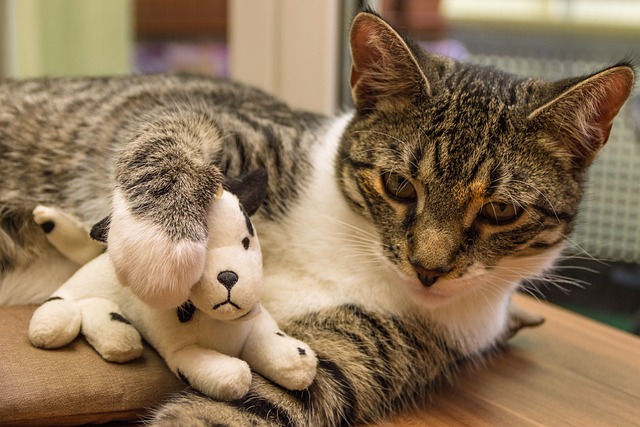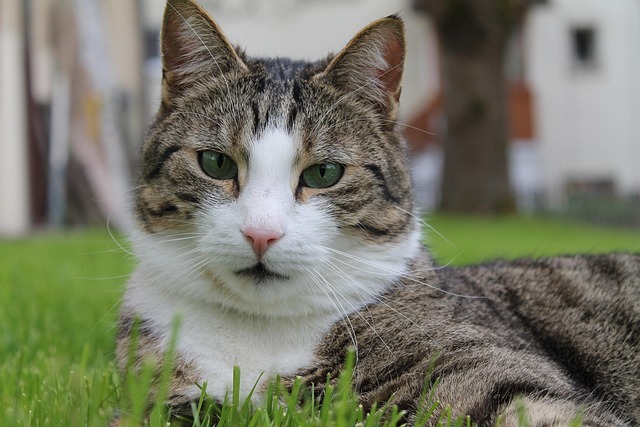Cats, with their enigmatic personalities and graceful movements, have captivated humans for centuries. These charming and sometimes mysterious creatures are not only beloved pets but also provide companionship and joy to millions around the world. One of the ways we can reciprocate their affection is by providing them with toys that engage their natural instincts and stimulate their minds.
From feathered wands to interactive puzzles, there’s a wide array of toys available that can cater to a cat’s diverse preferences. But among this plethora of choices, which toy do cats like the most? Let’s delve into the feline world and explore some of the top contenders for the title of a cat’s favorite toy.
The Hunt is On: Interactive Toys
Cats are born hunters, descendants of fierce predators that once roamed the wild. Their playful pounces and inquisitive behavior often mimic the behaviors they would use in the wild to stalk and catch prey. Interactive toys that mimic the movements of small animals can be a cat’s delight.
Toys like battery-operated mice that scurry across the floor or feathered wands that dance through the air engage a cat’s hunting instincts and provide them with hours of entertainment. These toys tap into a cat’s primal urges and can keep them physically active and mentally engaged, preventing boredom and promoting a healthier lifestyle.
The Joy of Texture: Satisfying Sensory Toys
Cats are known for their curious nature, and their fascination with textures is no exception. Toys that offer a variety of textures can be incredibly enticing to cats. From soft plushies to crinkly balls, these toys provide tactile stimulation that cats find irresistible.
Some cats may enjoy kneading and nuzzling soft toys, simulating the behavior they would exhibit while nursing from their mother. Crinkly toys, on the other hand, appeal to their sense of sound as well as touch. The satisfying crinkle sound can mimic the rustling of leaves or the scurrying of a small creature, triggering a cat’s hunting instincts and keeping them engaged.
The Pursuit of Agility: Feathered Wands and Laser Pointers
Feathered wands have long been a favorite among cats and their owners. The combination of feathers swaying in the air and the unpredictable movements of the wand can be irresistible to cats. The erratic nature of the toy triggers a cat’s innate curiosity and predatory instincts, making them pounce, leap, and bat at the feathers in a display of agility and grace.
Laser pointers, while controversial due to concerns about cats becoming frustrated by not being able to “catch” the elusive dot, can also provide similar engagement. The fast-moving light mimics the movement of prey, prompting cats to chase it around the room.
The Puzzle Solvers: Brain-Teasing Toys
Just like humans, cats need mental stimulation to stay sharp and engaged. Puzzle toys that require problem-solving can be a cat’s favorite, especially for those with a more curious and analytical temperament. These toys usually involve hidden treats or compartments that a cat needs to figure out how to open. As they manipulate the toy to access the treats, they’re exercising their cognitive abilities. Puzzle toys not only keep cats entertained but also help prevent boredom-related behavior issues, making them a great choice for indoor cats.
The Simplicity of Classic Toys: Cardboard Boxes and Paper Balls
While there’s a vast array of specialized cat toys available, sometimes it’s the simplest things that bring the most joy. Cats are notorious for finding amusement in ordinary household items.
Cardboard boxes, with their cozy and enclosed spaces, can provide hours of entertainment as cats explore, nap, and pounce within them. Similarly, crumpled-up paper balls can tap into a cat’s natural tendency to bat and chase objects, providing a budget-friendly source of amusement.
The Power of Catnip: Herbal Delights
Catnip, a member of the mint family, has a potent effect on many cats. When exposed to catnip, cats can exhibit a range of behaviors, from rolling and rubbing to playfully chasing imaginary prey.
Catnip-infused toys, such as plushies or cushions, can be a cat’s favorite plaything. The scent of catnip stimulates cats’ olfactory senses and triggers a euphoric response that can be both entertaining and stress-relieving.
Tailoring Toys to Individual Preferences
Just as every cat has a unique personality, their toy preferences can also vary widely. Some cats may prefer toys that mimic the movement of small prey, while others might enjoy the tactile stimulation of soft plushies. It’s essential for cat owners to observe their feline companions closely to understand their individual preferences. Experimenting with different types of toys can help determine which ones resonate the most with a particular cat’s interests and instincts.
The Importance of Rotation and Engagement
While finding a cat’s favorite toy can be a delightful journey, it’s important to note that cats can become bored with their toys over time. To keep playtime exciting and engaging, it’s recommended to rotate toys periodically.
Introducing new toys or bringing out old favorites that have been stowed away can reignite a cat’s interest and enthusiasm. Interactive play sessions with their human companions also provide an opportunity for bonding and physical activity, enhancing the overall well-being of the cat.
In Conclusion:
The question of which toy cats like the most doesn’t have a one-size-fits-all answer. Cats are complex creatures with diverse preferences and personalities. What might be a beloved toy for one cat could be completely ignored by another. The key to finding a cat’s favorite toy lies in observing their behaviors, experimenting with various types of toys, and tailoring playtime to their individual preferences.
From interactive toys that tap into their hunting instincts to sensory toys that satisfy their curiosity, there’s a vast world of feline entertainment waiting to be explored. So, let the play begin, and watch as your feline friend’s eyes light up with joy and excitement in the pursuit of their perfect playtime companion.
Related posts:









